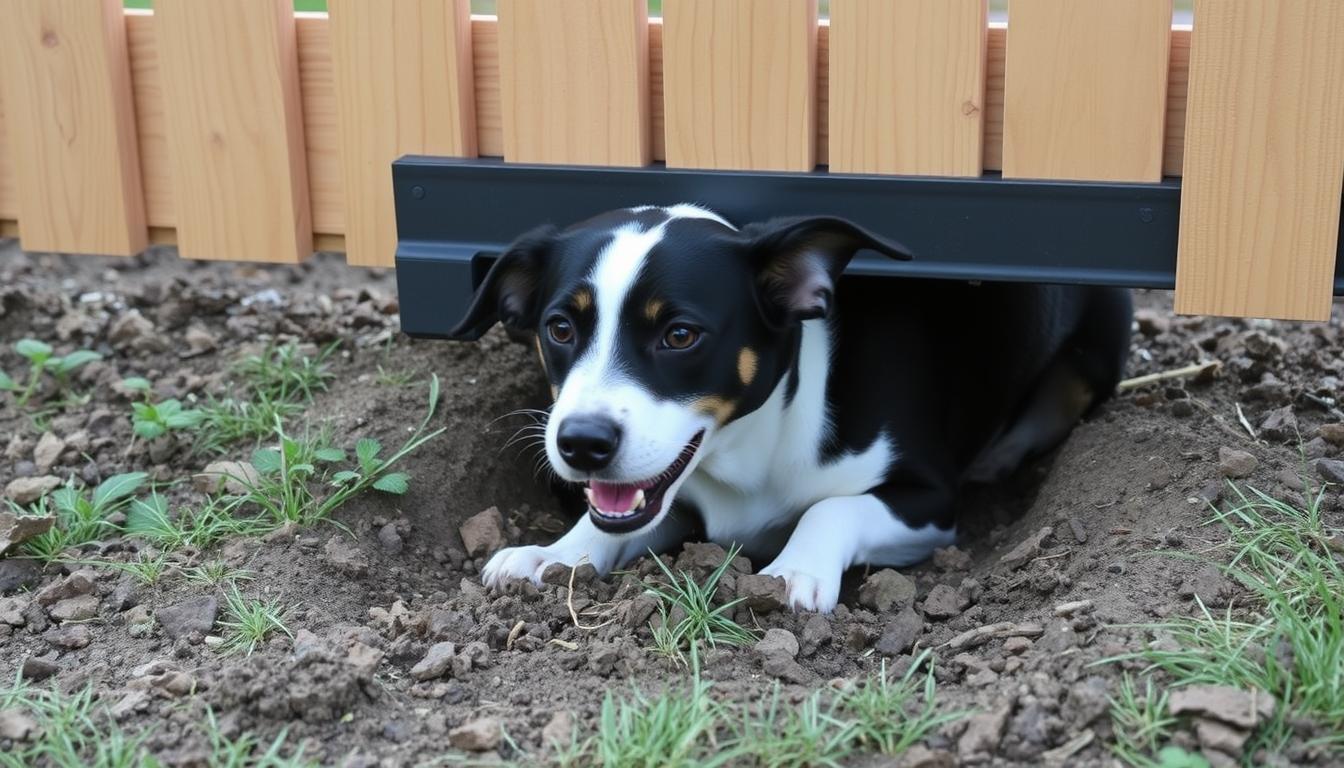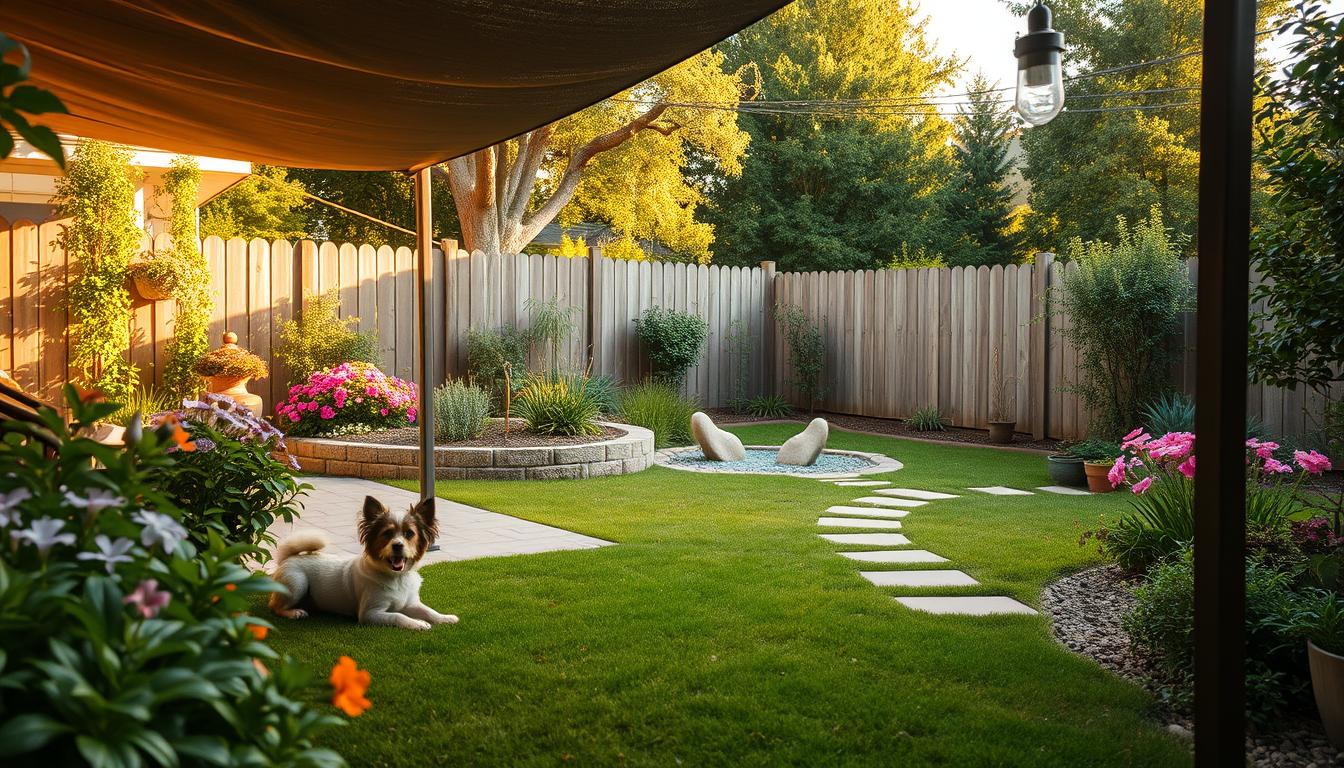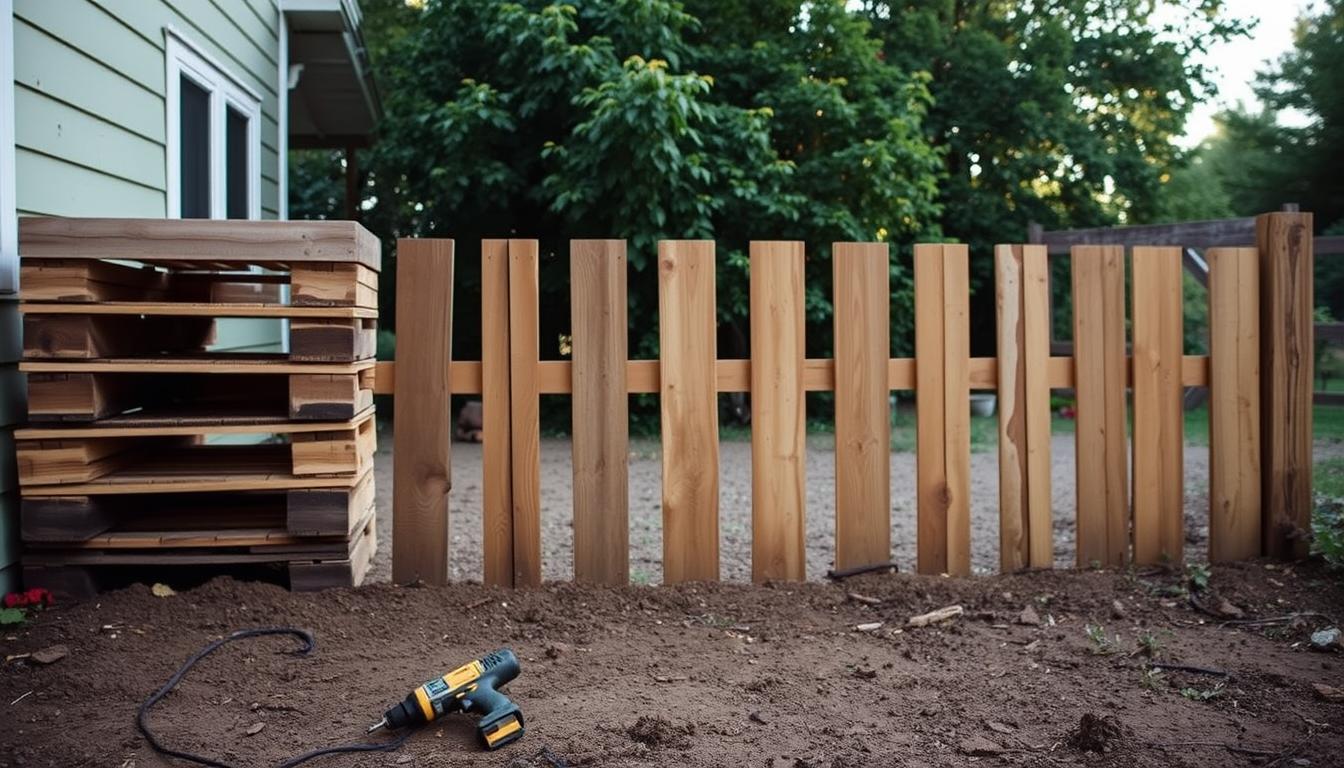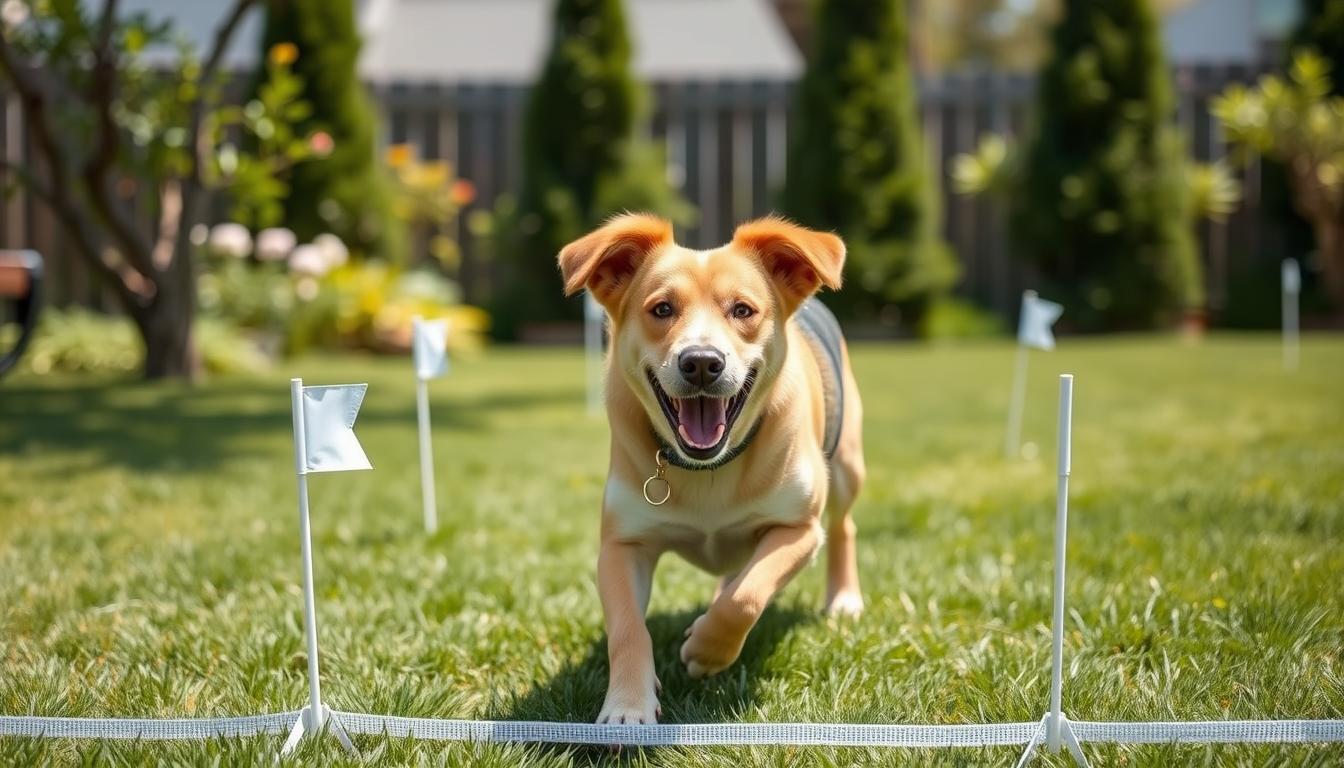As a dog owner, you want to ensure your pet’s safety while giving them the freedom to enjoy your yard. However, even well-behaved dogs can become escape artists if they find a weak spot in your fence.
Identifying your dog’s escape method is crucial to selecting the right barrier solution. By understanding how dogs escape and what motivates them, you can create a secure environment that keeps them safe.
A fence alone may not be enough to prevent escapes. You need to consider additional ground-level barriers that work in conjunction with your existing fence to create a safe and engaging outdoor space.
Key Takeaways
- Effective ground-level barriers can prevent your dog from escaping your yard.
- Understanding your dog’s escape method is crucial to selecting the right barrier.
- A combination of fence and ground-level barriers creates a secure environment.
- Proper barrier installation provides peace of mind for dog owners.
- A well-designed outdoor space can keep your dog engaged and safe.
Why Dogs Become Escape Artists
Several key reasons explain why dogs become escape artists, and understanding these can help prevent escapes. Dogs are complex animals with various needs and instincts that, if unmet or triggered, can lead them to attempt escaping their yard.
Boredom and Lack of Stimulation
Dogs require mental and physical stimulation. Without adequate exercise and engaging activities, they may resort to escaping as a way to entertain themselves. Ensuring your dog has plenty of toys, exercise, and interaction can significantly reduce the likelihood of escape attempts driven by boredom.
Separation Anxiety
Some dogs suffer from separation anxiety, leading them to attempt to escape when left alone. This anxiety can manifest as destructive behavior or persistent barking, and in severe cases, as escape attempts. Addressing separation anxiety through training and providing a comfortable environment can help mitigate this issue.
External Triggers and Distractions
External stimuli such as wildlife, other dogs, or neighborhood activities can provoke even well-behaved dogs to attempt an escape. Identifying these triggers and taking steps to minimize their impact, such as blocking the dog’s view of the street or reducing noise levels, can be effective.
| Reason for Escaping | Description | Potential Solution |
|---|---|---|
| Boredom and Lack of Stimulation | Dogs seek entertainment due to lack of mental and physical stimulation. | Provide adequate exercise, toys, and interaction. |
| Separation Anxiety | Dogs attempt to escape due to distress when left alone. | Address separation anxiety through training and comfort measures. |
| External Triggers and Distractions | External stimuli provoke dogs to escape. | Minimize exposure to triggers and reduce their impact. |
By understanding the underlying reasons for your dog’s escape attempts, you can take targeted measures to prevent future occurrences, ensuring your dog remains safe within your yard.
Identifying Your Dog’s Escape Method
Understanding how your dog escapes is crucial to preventing future attempts. Different dogs have different ways to escape, and identifying yours is the first step towards securing your yard.
Some dogs are adept at digging and can create complex underground tunnels, while others are agile jumpers or skilled climbers. There are also those that can squeeze through tiny gaps or rush through gates as soon as they’re opened.
The Diggers: Underground Escape Routes
Diggers are dogs that escape by burrowing under the fence. They can excavate complex tunnels along the fence line, creating an underground escape route. To identify if your dog is a digger, look for signs of digging near the fence.
- Check for holes or tunnels under the fence.
- Observe your dog’s behavior near the fence line.
The Jumpers and Climbers
Some dogs are naturally athletic and can scale tall fences either by jumping or climbing. Jumpers and climbers use their agility and strength to overcome the barrier. If your dog is a jumper or climber, you may need to consider additional security measures.
- Assess the height of your fence and consider adding extensions.
- Remove objects near the fence that could aid climbing.
The Fence Squeezers and Gate Rushers
Some dogs, especially smaller ones, can squeeze through tiny gaps in the fence, while others wait for the perfect moment to rush through the gate or an open door. Identifying these behaviors is crucial to preventing dog escaping.
- Inspect your fence for any gaps or weaknesses.
- Be cautious when opening the gate to prevent your dog from rushing out.
By understanding your dog’s escape method, you can take targeted measures to secure your yard and prevent future escapes.
Ground-Level Dog Barriers That Stop Escape Artists
To keep your dog safe and secure, it’s crucial to implement effective ground-level dog barriers. These barriers are designed to prevent dogs from escaping by targeting their most common escape methods.
L-Footers and Dig Guards
L-footers are a highly effective solution for preventing dogs from digging under fences. By attaching an L-footer along the bottom of the fence, facing inward, you create a barrier that discourages digging. You can use materials like chicken wire, hardware cloth, or a piece of chain-link fence for this purpose.
These materials can be buried for a cleaner look or laid on top of the grass and secured with rocks, gravel, or planters. The key is to create a wide enough barrier to prevent your dog from digging underneath.
Concrete Footers
For more determined diggers, a concrete footer can be a permanent solution. By pouring concrete along the perimeter of the fence and burying the bottom fence into it, you create an impenetrable barrier. This method not only stops digging but also enhances the overall stability of your fence.
Buried Chicken Wire Solutions
Another effective method is using buried chicken wire to prevent digging. By laying chicken wire along the bottom of the fence and burying it a few inches underground, you create an uncomfortable surface for your dog to dig on, thus discouraging escape attempts.
These ground-level barriers can be tailored to your dog’s specific needs and can be installed without compromising the aesthetic appeal of your yard. By understanding your dog’s escape methods, you can choose the most appropriate barrier to keep them safe.
Barrier Installation Guide for Different Fence Types
Different fence types require unique approaches to installing ground-level barriers that prevent dog escapes. The key to a successful installation is understanding the specific requirements of your fence.
Chain-Link Fence Barriers
For chain-link fences, a wire mesh barrier is an effective solution. You can use a product like Fencer Wire, which comes in various sizes and colors. To install, simply roll out the mesh and secure it to the fence using zip ties. This method ensures a seamless look while preventing your dog from escaping. When installing, make sure to cover the entire perimeter to prevent any gaps.
| Fence Type | Barrier Material | Installation Method |
|---|---|---|
| Chain-Link | Wire Mesh | Zip Ties |
| Wooden | Wooden or Composite Panels | Screws or Nails |
| Vinyl | Vinyl-Compatible Mesh | Adhesives or Clips |
Wooden Fence Barriers
For wooden fences, you can install barriers using wooden or composite panels. To prevent damage to the fence, use screws or nails that are designed for outdoor use. Ensure the barrier is securely attached to prevent your dog from pushing through or digging under. When choosing a barrier, consider the aesthetic appeal to make sure it looks like a natural extension of your fence.
Vinyl and Other Fence Types
For vinyl and other fence types, it’s essential to choose a barrier material that is compatible with your fence. Vinyl-compatible mesh or other specialized materials may be required. The installation method may vary, using adhesives or clips to secure the barrier. Consult the manufacturer’s instructions to ensure a proper installation that will prevent dog escapes.
By following these guidelines, you can effectively install a ground-level barrier on your fence, regardless of the type. This will help prevent your dog from escaping and ensure their safety.
Preventing Climbing and Jumping Escapes
Ensuring your dog can’t jump or climb over the fence is essential for their safety. Dogs that are adept at escaping can put themselves in harm’s way, making it crucial for owners to implement effective barrier solutions.
Coyote Rollers and Fence Extensions
Coyote rollers are an effective solution to prevent dogs from climbing over fences. These rollers are attached to the top of the fence and rotate when a dog tries to use them as a foothold, making it difficult for the dog to get a secure grip. Another effective method is to extend your fence with an inward-angled section, creating a psychological and physical barrier that deters dogs from attempting to jump or climb over.
The top of your fence can be modified with an L-footer or a lean-in to prevent climbing. An L-footer extends horizontally from the top of the fence, while a lean-in involves attaching farm wire to create an awning-like structure on the inside of the fence. Both methods discourage dogs from climbing by presenting a barrier above them.
Visual Barriers and Landscaping Solutions
Visual barriers, such as privacy slats or mesh, can be used to block your dog’s view of outside distractions, reducing the motivation to escape. By limiting what your dog can see, you’re lessening their desire to jump or climb the fence.
Strategic landscaping can also play a significant role in discouraging fence access. By placing plants or other barriers near the fence, you can make it less appealing for your dog to attempt to climb or jump. This not only enhances the appearance of your yard but also contributes to a safer environment for your pet.
Solutions for Small Dogs and Fence Squeezers
If you own a small dog, you know how challenging it can be to keep them from squeezing through the fence. Small dogs can be quite resourceful, and their ability to slip through narrow openings poses a unique challenge for pet owners.
Puppy Bumpers and Specialized Collars
A puppy bumper is a simple yet effective solution to prevent small dogs from escaping through fence pickets. It’s essentially a stuffed pillow collar that makes your dog too wide to fit through the gaps. When choosing a puppy bumper or any specialized collar, it’s crucial to ensure it’s comfortable for your dog while effectively preventing escape.
- Learn how puppy bumpers work as specialized collars that prevent small dogs from squeezing through fence gaps by making them physically wider.
- Understand how to properly fit and use specialized collars and harnesses designed to prevent small dogs from escaping through narrow openings.
- Discover how to make sure these solutions remain comfortable for your dog while still providing effective escape prevention.
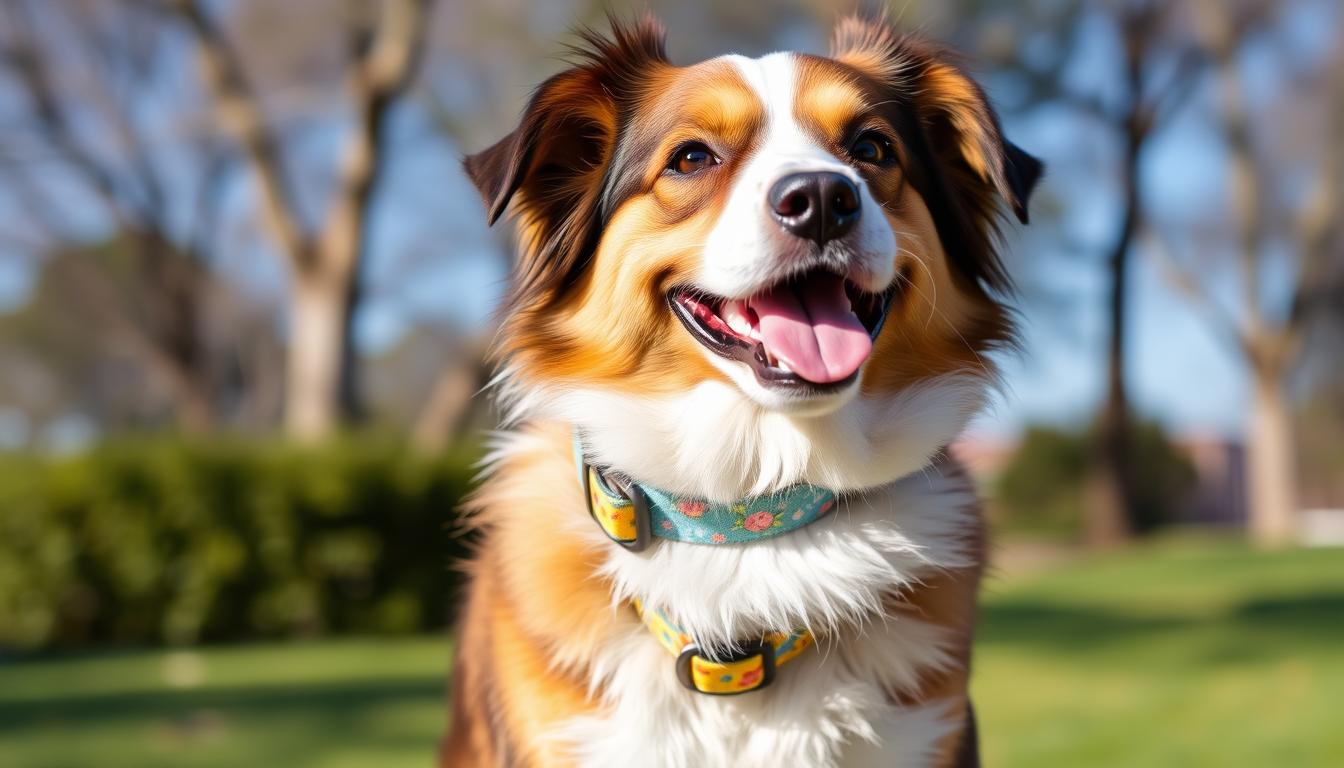
Mesh and Wire Fence Reinforcements
In addition to using specialized collars, reinforcing your fence with mesh or wire can effectively close gaps and prevent small dogs from escaping. This method is particularly useful for existing fences that have wide picket spacing or gaps.
- Discover the various types of mesh and wire fence reinforcements that can be added to existing fences to close gaps without replacing the entire structure.
- Explore the benefits and limitations of each solution type, including when a puppy bumper might be more appropriate than fence modifications.
- Learn how to identify all potential squeeze points in your fence that small dogs might exploit, including areas that larger dogs wouldn’t notice.
It’s also important to remember that even with these solutions, supervision is key. Small dogs can be very crafty, and constant vigilance is necessary to ensure their safety.
Additional Escape Prevention Strategies
Creating a secure yard involves more than just installing barriers; it’s about making your yard a haven for your dog. To keep your dog safe and prevent escape attempts, consider implementing the following strategies.
Creating an Engaging Yard Environment
Make your yard an enjoyable place for your dog by providing plenty of fresh water, shade, and engaging activities. Rotate your dog’s toys regularly to keep them interested, and consider using treat-dispensing toys to keep them stimulated. Make sure your dog has a comfortable spot to rest.
Exercise and Mental Stimulation
Regular exercise and mental stimulation are crucial in preventing escape behaviors driven by boredom or excess energy. Spend quality time with your dog, engaging in activities like fetch, training sessions, or simply hanging out. This will not only tire them out but also strengthen your bond.
GPS Tracking Collars for Peace of Mind
Equip your dog with a GPS tracking collar like the Fi GPS Dog Collar, which enables 24/7 location tracking across the U.S. on a brand new LTE-M network. This provides an additional layer of safety, allowing you to quickly locate your dog if they do manage to escape.
![]()
Conclusion: Keeping Your Escape Artist Safe at Home
Creating a secure environment for your escape artist is a multifaceted task that involves understanding their behavior, implementing effective barriers, and providing a stimulating environment.
To keep your dog safe, it’s essential to combine physical barriers, such as fence extensions and dig guards, with behavioral management techniques, like exercise and mental stimulation. Regularly inspecting your fence and gate will help ensure they remain effective as your dog develops new escape strategies.
A comprehensive safety plan should include contingency measures, such as a GPS tracking collar, to quickly locate your dog if they do escape. It’s also crucial to maintain consistency in your approach to yard time and supervision to reinforce boundaries and reduce escape attempts.
By understanding that different solutions may be needed as your dog ages or as new distractions appear, you can create a flexible plan that balances security with your dog’s need for freedom and exploration. This approach will help you create a safe and happy home environment for your pet.
Remember, keeping your escape artist safe at home is an ongoing process that requires adjustments and new strategies as you learn more about your dog’s behavior patterns. With the right combination of physical barriers, behavioral management, and environmental enrichment, you can minimize the risk of escape and ensure your dog remains safe and happy in your yard.
If your dog does escape, it’s vital not to punish them upon return, as this can create anxiety and make them less likely to return to your yard. Instead, focus on preparing a contingency plan, like using a Fi collar, to ensure their safe return. By being proactive, you can enjoy peace of mind knowing that your dog is safe at home.

